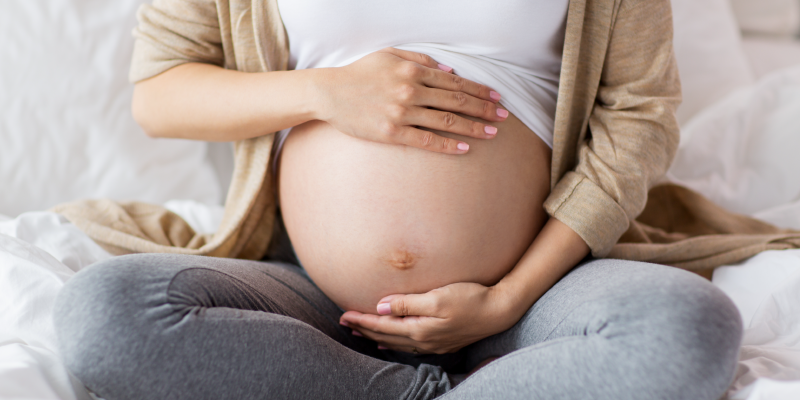Not all baby bumps are created equal. Petite, booming, B-shaped, sitting high or swinging low — baby bumps come in all shapes and sizes. In fact, there are so many factors that determine your pregnancy belly shape that no two bumps could ever be said to be exactly the same. So, why do pregnancy bellies differ so much, even when women are in the exact same stage of the journey? And what does the shape of your baby bump even mean? How you carry your baby depends more on the shape of the baby, your overall build, bone structure and muscle tone. Here’s what your pregnancy belly shape reveals about your baby.
A Small Torso Shows Every Ounce of the Bump
Short women typically have larger and more protruding bumps than taller women. Why is that? It has more to do with the length of your torso. Short torsos offer less room for the uterus to grow upward between the pelvis and ribs. As a result, the baby grows and the bump expands outward. In a longer torso, the uterus stays narrow creating a smaller bump. Short-statured women may show earlier in the pregnancy and carry the weight around their hips and bottom, while taller women carry babies more toward the front.
Slender Frame Means a Petite Bump
In most cases, women with very slender frames appear to gain very little weight at all. A slight frame typically result in a very neat, small bump. You’ve heard the phrase “from the back you wouldn’t know she was pregnant!” and it applies to women with slender frames. Even as they get closer to giving birth, every limb stays slim.
Bumps are Bigger with #2 and #3
Studies show that with your first baby, your bump is significantly smaller than for second and third pregnancies. The reason? Pregnancy hormones and abdominal muscles. One of the first things to happen with pregnancy is an increase in the hormone progesterone. This causes bloating and can make the stomach swell before the womb has had time to grow. This tends to happen more quickly after the first pregnancy. Another result of a growing uterus is abdominal muscles and ligaments to stretch. While they do constrict after birth, they will always be loose which means they’re more elastic with subsequent pregnancies.
Fitness Can Equal Flatness
How fit a woman is and whether she’s in peak physical condition can predict the shape of her pregnancy belly. If you have defined abs and a toned, taut tummy, this will prevent your bump from sticking out. Fitter women tend to carry their bump higher and closer. More lax muscles can cause the bump to be lower and more broad.
The Bigger the Dad, the Bigger the Bump
Genes can also play a part in the size and shape of your pregnancy belly. The size of the dad is often linked to the baby’s birth weight, and can affect the bump’s shape and size. Taller parents are more likely to have taller babies.
Low Pregnancy Belly
The wives’ tales say that if you have a low pregnancy belly, you’re having a girl. Legend says this is because you feel more in tune with it being a girl and therefore excess fat and water reserves appear around your waist, hips and bottom. But the reality is that on average babies are just simply getting heavier. In 1970, the average birth was 6 lb. 2 oz. and today it’s at 7 lb. 5 oz., which is a 20 percent increase. Experts have predicted this will continue to increase in the future.
High Pregnancy Belly
Conversely, a high pregnancy belly does not mean you’re having a boy. It has more to do with where the baby is inside the womb. Some women carry their baby almost directly under their bust. This happens when the placenta is settled high up inside the body, causing the baby to move upward too.
B or D Shape?
Most women end up with a traditional watermelon or “D-shaped” baby bump, but a select few end up with a pear or a “B.” In this case, you can thank the position of the baby. Usually babies are curled in the fetal position with head down, back is toward your belly button and arms/legs tucked inside. A third of babies are positioned with their spine next to the mother’s spine, or “back-to-back.” Legs and arms face outward. The bump is less smooth but is often temporary. Babies turn from side to side often so the B-shape is something that will come and go.
At the end of the day shape doesn’t determine gender. And the most important factor is how the baby is growing, as long as the baby is gaining the right weight the shape doesn’t matter. It’s what’s inside that counts.
